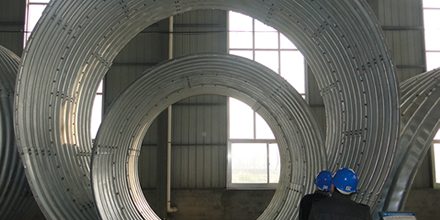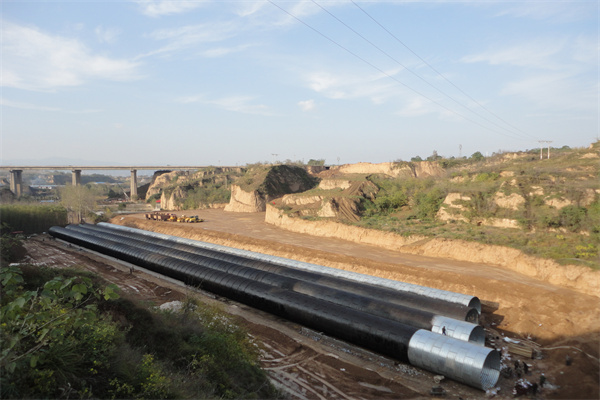Foundation Requirements For Corrugated Pipe culvert Construction
In road construction projects, it is not necessary to separately treat the bottom of the corrugated pipe foundation, because the settlement of the culvert foundation bottom is consistent with the settlement of the roadbeds on both sides, and the foundation of the corrugated pipe culvert is generally a flexible foundation. In sections with poor geological conditions such as soft soil areas, the basic principle is that the foundation treatment of the culvert is consistent with the roadbed and does not require additional treatment. When excavating the foundation pit, the width of the proposed steel corrugated pipe culvert should be three times the width of the steel corrugated pipe culvert. If the construction site space is too small, at least 1.2m or more of the working space beyond the span should be ensured. This not only facilitates assembly, but also facilitates backfilling and compaction around the steel corrugated pipe culvert. The basic permeability is good, and the compactness of sandy soil or gravel and crushed stone soil with good particle size distribution meets the requirements.
Reserve 0.3-1% on the top surface of the foundation. Pre arching of corrugated pipes buried on general soil foundations, through a period of time, there is often a certain degree of subsidence, and it is often greater in the middle of the pipeline than at both ends. Therefore, the pipe body of the corrugated pipe laid under the embankment should have a reserved arch. Its size is determined by factors such as the possible settlement of the foundation soil, the longitudinal slope of the culvert bottom, and the height of the fill soil. It can usually be 0.3% to 1% of the pipe length, and should not exceed 2% at most to ensure that there are no depressions or landslides in the middle of the pipeline
Steel corrugated pipe culvert bottom longitudinal slope. The maximum longitudinal slope of the steel corrugated pipe culvert bottom should be controlled within 20%. When the longitudinal slope of the culvert bottom is greater than 7%, it should be located at the end walls of the two openings reinforced concrete is used to prevent slippage. At present, the maximum application rate in engineering has reached 16% (Gulan Highway in Shanxi Province)
1. High quality land foundation. Unscreened sand, crushed stone, gravel soil, and sandy soil are ideal foundation materials, but hard objects such as stones with a diameter of more than 10cm need to be removed.
2. General soil foundation. Ordinary foundations with low bearing capacity require a certain thickness of foundation. However, if the undisturbed soil of the culvert bottom trench is strictly compacted (with a compaction degree of over 90% of the heavy compaction degree), the corrugated pipe can also be directly placed on the foundation.
3. Rock foundation. Corrugated pipe culvert cannot be directly placed on rock or concrete foundations, as overly rigid supports not only reduce the good flexibility of the pipe wall itself, but also decrease the load-bearing capacity of the culvert pipe. So for rock foundations, a part of the soft rock should be excavated and replaced with a layer of high-quality soil. Generally, the replacement thickness should not be less than 30cm, and it should be carefully compacted. When excavating soft rock trenches, high explosives and deep hole blasting should not be used to avoid loosening too much of the outer layer. The weathered rock layer foundation cannot be used as a foundation and needs to be replaced with high-quality soil of 3D width.
4. Soft soil foundation When the culvert pipe is on a soft soil foundation, the soft soil subgrade needs to be treated. The treatment method for the culvert foundation is the same as that for the subgrade of the section, and then a high-quality sand and gravel cushion layer with a thickness greater than 30cm should be filled on it.
5. Collapsible loess foundation Due to the special nature of the soil in collapsible loess, after excavation of the foundation pit, the base should be backfilled with not less than 50cm of rubble concrete (or 3:7 white lime soil), and a high-quality sand and gravel cushion layer with a thickness of 30-80cm should be backfilled on top of it.
6. Mud River Foundation In rivers with perennial flowing water, the silt often cannot bear the bearing capacity. The general treatment is to use the method of throwing stones, with a thickness of about 1.5-3m. After stabilizing it, compaction machinery is used to compact it, and a gravel cushion layer of not less than 30cm is laid on it. If the sediment in the river channel is made of sandstone material, corrugated pipe culverts can be directly laid after compaction.
 Products
Products Application
Application



